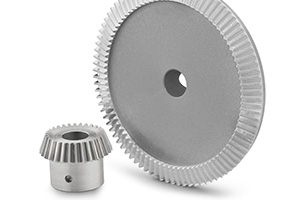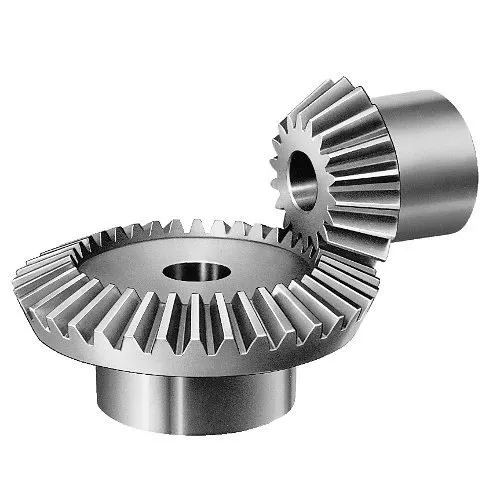Product Description
Custom Precision Auto Spare Machine Parts Die Casting Stainless Steel Straight Right Angle Miter Cold Forged Forging Spiral Zerol Helical Hypoid Bevel Gear
Product Description
We can process according to the drawings you provide
Gear processing process
1. Forging
Hot die forging is still a widely used blank forging process for automotive gear parts. In recent years, cross wedge rolling technology has been widely used in shaft machining. This technology is especially suitable for making blanks for complicated stepped shafts. It has high precision, small machining allowance and high production efficiency.
2. Normalizing
The purpose of this process is to obtain the hardness suitable for subsequent gear cutting and prepare for the final heat treatment, so as to effectively reduce the heat treatment deformation. The gear steel used is usually made of 20CrMnTi. Due to the great influence of personnel, equipment and environment, the general normalizing makes it difficult to control the cooling speed and uniformity of the workpiece, resulting in large hardness dispersion and uneven metallographic structure, which directly affects metal cutting and final heat treatment, making the thermal deformation large and irregular, and the quality of parts uncontrollable. Therefore, isothermal normalizing process is adopted. Practice has proved that the adoption of isothermal normalizing effectively changes the disadvantages of general normalizing, and the product quality is stable and reliable.
3. Turning
In order to meet the positioning requirements for high-precision gear processing, CNC lathes are used to process gear blanks, and mechanical clamping is used without regrinding the turning tool. The simultaneous processing of the hole diameter, end face and outer diameter is realized under 1 clamping, which not only ensures the perpendicularity requirements of the inner hole and end face, but also ensures the small size dispersion of large batch of gear blanks. Thus, the accuracy of gear blank is improved and the machining quality of subsequent gears is ensured. In addition, the high efficiency of CNC lathe processing also greatly reduces the number of equipment, which is economical.
4. Hobbing and gear shaping
The equipment used to process the gear is still a large number of ordinary hobbing machines and gear shapers. Although it is convenient to adjust and maintain, the production efficiency is low. If large capacity is achieved, multiple machines need to be produced at the same time. With the development of coating technology, the re coating of hobs and slotting tools after grinding is very convenient. The coated tools can significantly improve their service life, generally by more than 90%, effectively reducing the number of tool changes and grinding time, with significant benefits.
5. Shaving
radial shaving technology is widely used in the production of large quantities of automobile gears because of its high efficiency and the easy realization of the requirements for the modification of the designed tooth profile and tooth direction. Since the company purchased the special radial shaving machine of Italian company through technical transformation in 1995, the technology has been applied maturely and the processing quality is stable and reliable.
6. Heat treatment
Automobile gears require carburizing and quenching to ensure their good mechanical properties. Stable and reliable heat treatment equipment is essential for products that are no longer subject to gear grinding after heat treatment. The company has introduced the continuous carburizing and quenching production line of German Louyi Company, and has obtained satisfactory heat treatment effect.
7. Grinding
It is mainly used to finish the inner hole, end face, shaft outer diameter and other parts of the gear after heat treatment to improve the dimensional accuracy and reduce the form and location tolerance.
Related products
Transmission parts
Gearbox / Speed reducer
Company Profile
Our company has perfect management system and complete detection means, including physical and chemical laboratory, spectrometer, ultrasonic flaw detector and magnetic particle flaw detector, tensile testing machine, Brinell hardness tester, CMM and other detection equipment. The forging processing equipment is complete, including 2 2500T and 4000T press forging production lines; Machining equipment includes: machining center, CNC lathe, CNC gear shaper, milling machine, drilling machine, planer and other processing equipment of more than 60 sets. Heat treatment equipment: 6 box type electric furnaces; The heating equipment includes 3 medium frequency induction furnaces and 3 natural gas heaters. The excellent quality, excellent service and mutual cooperation make our customers all over the world and get good comments from users.
The main products are forged parts within 200kg in engineering machinery, new energy equipment, mining machinery, agricultural machinery, petroleum machinery, heavy trucks and other fields. It produces and sells gear box forgings, hydraulic cylinder forgings, reducer forgings, forging processing, gear ring forging, wheel forging, hook forging and other products. It is a CZPT forging manufacturer and die forging manufacturer in the industry.
| Application: | Motor, Electric Cars, Motorcycle, Machinery, Marine, Toy, Agricultural Machinery, Car |
|---|---|
| Hardness: | Hardened Tooth Surface |
| Gear Position: | Internal Gear |
| Manufacturing Method: | Cast Gear |
| Toothed Portion Shape: | Bevel Wheel |
| Material: | Stainless Steel |
| Samples: |
US$ 9999/Piece
1 Piece(Min.Order) | |
|---|

What are the limitations of using miter gears in certain applications?
Miter gears, like any other mechanical component, have certain limitations that may restrict their use in certain applications. While miter gears are versatile and widely used, it’s important to consider their limitations to ensure proper selection and application. Here are some limitations of using miter gears:
- Higher Friction: Miter gears typically have higher friction compared to other types of gears, such as spur gears or helical gears. This can result in increased power losses and reduced efficiency, especially in applications where minimizing friction is critical.
- Lower Load Capacity: Miter gears generally have a lower load-carrying capacity compared to gears with parallel or helical tooth arrangements. The nature of their intersecting shafts and smaller tooth engagement area can limit their ability to handle heavy loads or transmit high torque.
- Sensitivity to Misalignment: Miter gears require precise alignment for optimal performance. Even slight misalignment between the shafts can result in increased noise, vibration, and accelerated wear. In applications where maintaining precise alignment is challenging, alternative gear types may be more suitable.
- Limited Speed Range: Miter gears may have limitations in terms of the speed range they can effectively operate at. High speeds can lead to increased noise, heat generation, and potential tooth failure due to centrifugal forces. It’s essential to consider the specific speed requirements of the application and select gears accordingly.
- Complex Manufacturing: Miter gears with specific angles, such as non-90-degree gears, require more complex manufacturing processes compared to standard 90-degree miter gears. This complexity can result in higher costs and longer lead times for custom or non-standard gear configurations.
Despite these limitations, miter gears continue to be widely used in various applications where their unique characteristics and advantages outweigh the drawbacks. It’s important to carefully evaluate the specific requirements of the application and consider alternative gear options if the limitations of miter gears pose significant challenges.

Can you provide examples of machinery that utilize miter gears?
Miter gears find application in various machinery and mechanical systems. Here are some examples of machinery that utilize miter gears:
1. Power Tools:
Miter saws and compound miter saws commonly use miter gears to transmit power at a 90-degree angle, allowing for precise cutting angles and bevels.
2. Robotics:
Miter gears are frequently used in robotic systems to transmit motion between joints and enable accurate movement and positioning.
3. Automotive Systems:
Miter gears are employed in automotive applications such as differentials, steering systems, and transfer cases to transmit power and change drive direction.
4. Printing Machinery:
Miter gears are utilized in printing presses to transfer power and change the orientation of rotating cylinders, enabling proper paper feeding and print registration.
5. Aerospace Systems:
Miter gears are found in aerospace applications like aircraft landing gear systems, where they are used to transmit power and change the direction of motion.
6. Medical Devices:
Medical equipment, such as surgical robots and imaging devices, may incorporate miter gears to achieve compact designs and precise motion transmission.
7. Industrial Machinery:
Miter gears are used in various industrial machinery, including conveyors, packaging equipment, and assembly line systems, to change the direction of motion and transmit power efficiently.
8. Construction Equipment:
Construction machinery, such as excavators and cranes, may employ miter gears in their rotating mechanisms to transmit power and change the direction of motion.
9. Marine Systems:
Miter gears are utilized in marine applications like propulsion systems and steering mechanisms to transmit power and change the direction of rotation.
10. HVAC Systems:
Heating, ventilation, and air conditioning (HVAC) systems may incorporate miter gears in their fan assemblies to change the direction of rotation and transmit power efficiently.
These are just a few examples of machinery that utilize miter gears. The versatility and space-saving characteristics of miter gears make them suitable for a wide range of applications across various industries.

Can you explain the unique design of miter gear teeth?
The design of miter gear teeth is distinct and plays a crucial role in the functionality of these gears. Here’s a detailed explanation:
1. Tooth Shape:
Miter gear teeth have a straight shape, similar to spur gears. However, unlike spur gears where the teeth are parallel to the gear axis, miter gear teeth are cut at a right angle to the gear’s face. This allows the teeth to engage correctly when two miter gears mesh together at a 90-degree angle.
2. Equal Number of Teeth:
Miter gears have an equal number of teeth on both gears in a pair. This ensures proper meshing and smooth transmission of rotational motion between the gears. The equal number of teeth is essential for maintaining a constant speed ratio and preventing any slippage or irregular motion.
3. Conical Shape:
Another unique aspect of miter gear teeth is the conical shape of the gears themselves. The teeth are cut on the conical surface, which allows for proper engagement and transmission of motion between intersecting shafts. The conical shape ensures that the teeth mesh correctly, providing efficient power transmission at the desired angle.
4. Meshing at 90-Degree Angle:
Miter gears are designed to mesh at a 90-degree angle, allowing for power transmission between intersecting shafts. The teeth are specifically cut to facilitate this arrangement, ensuring that the gears engage smoothly and transmit rotational motion without any loss or disruption.
5. Tooth Contact and Load Distribution:
When miter gears mesh, the contact between the teeth occurs along a single line, known as the line of contact. This concentrated contact area enables effective load distribution and ensures that the gear teeth bear the transmitted torque evenly. Proper tooth contact is vital for minimizing wear and maintaining the longevity of the gears.
6. Lubrication and Noise Reduction:
The unique design of miter gear teeth can influence lubrication and noise levels. Adequate lubrication is essential to reduce friction and wear between the teeth during operation. Additionally, the straight tooth profile of miter gears tends to produce more noise compared to gears with helical or curved teeth. Proper lubrication and noise reduction measures are often employed to optimize the performance of miter gears.
In summary, the unique design of miter gear teeth includes their straight shape, equal number of teeth, conical shape of the gears, meshing at a 90-degree angle, tooth contact along a line, and considerations for lubrication and noise reduction. These design features ensure efficient power transmission, proper load distribution, and reliable operation in mechanical systems that utilize miter gears.


editor by CX 2023-09-08